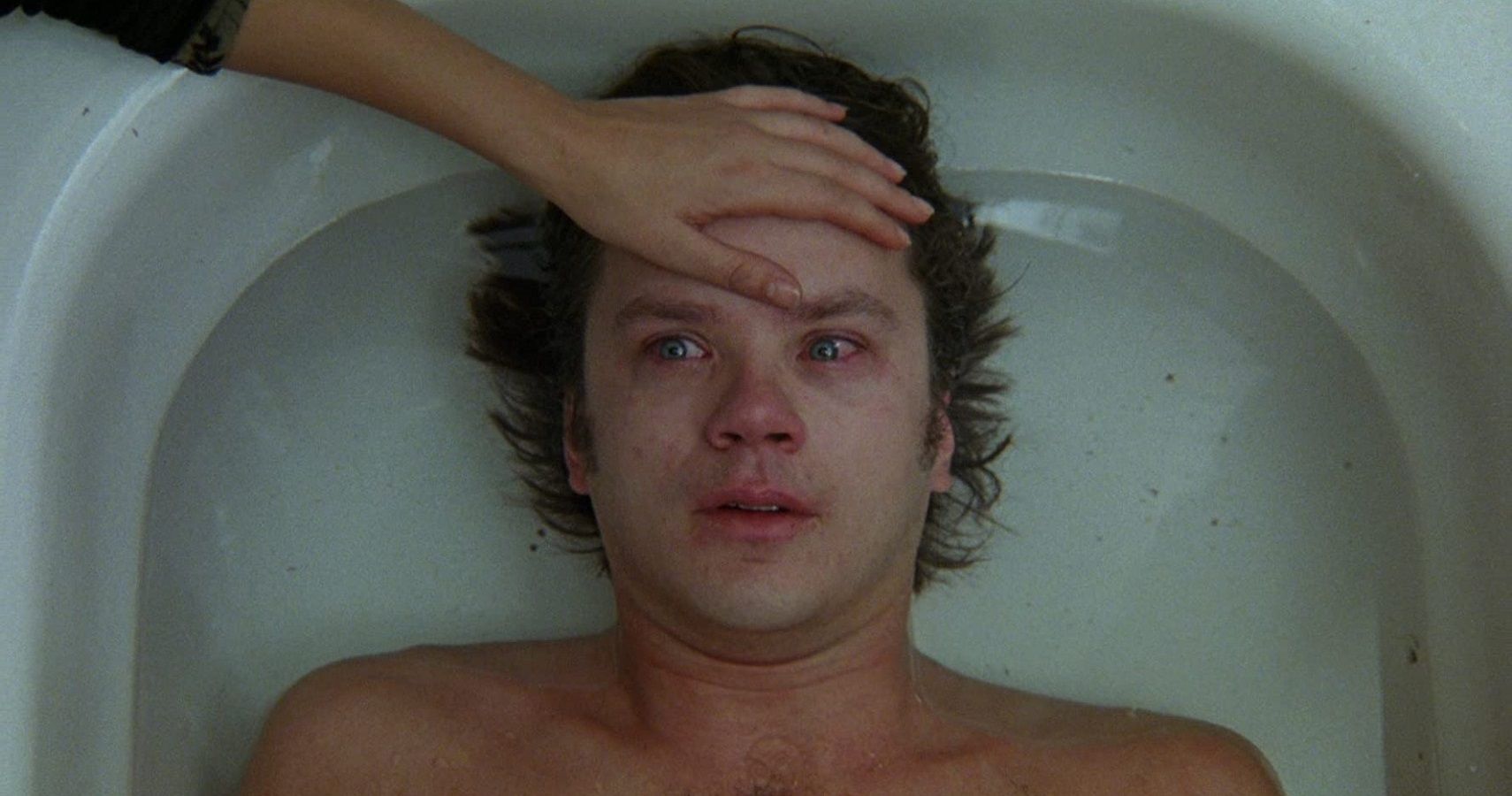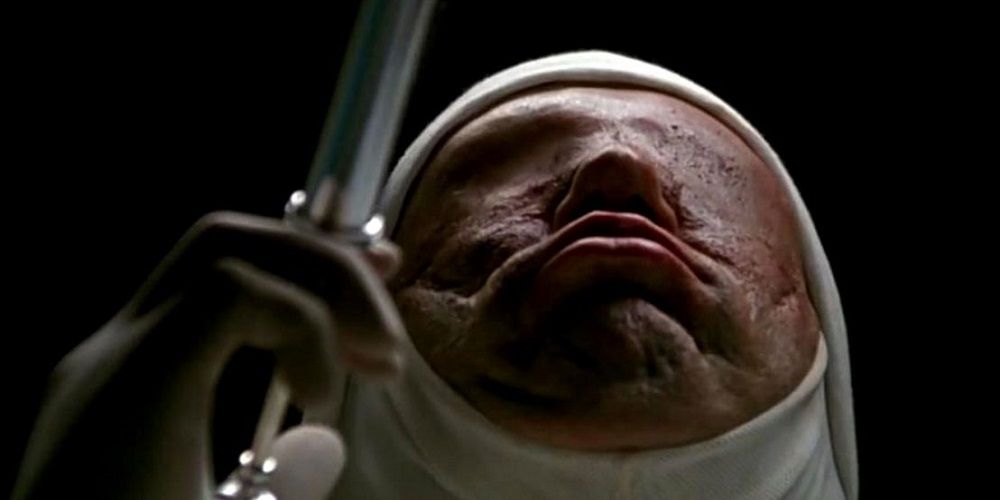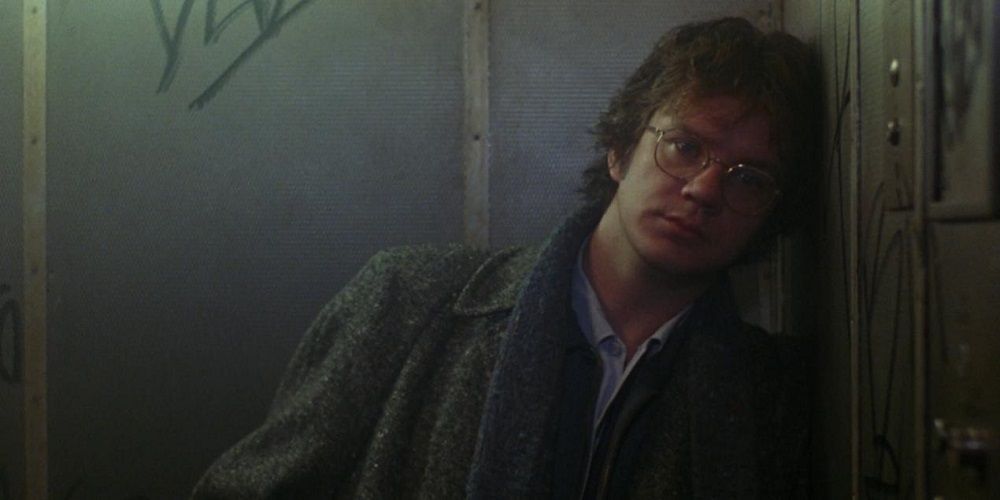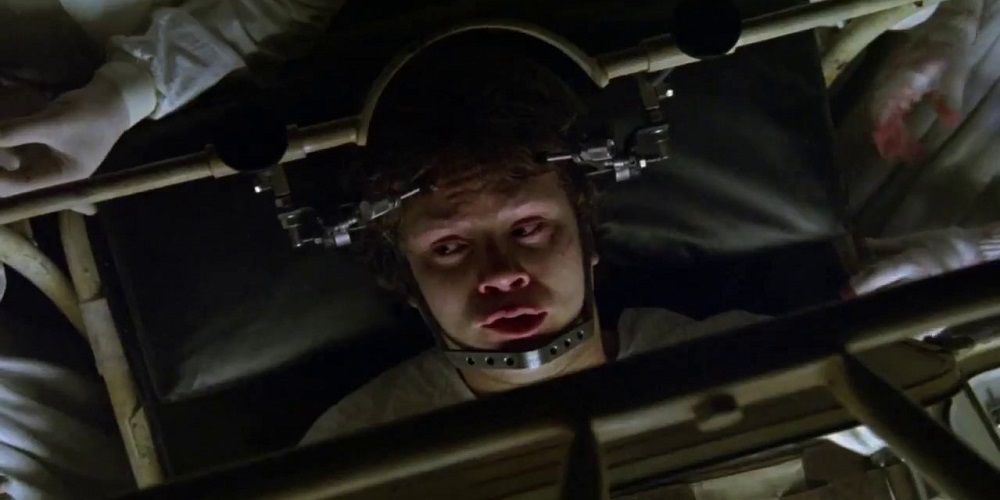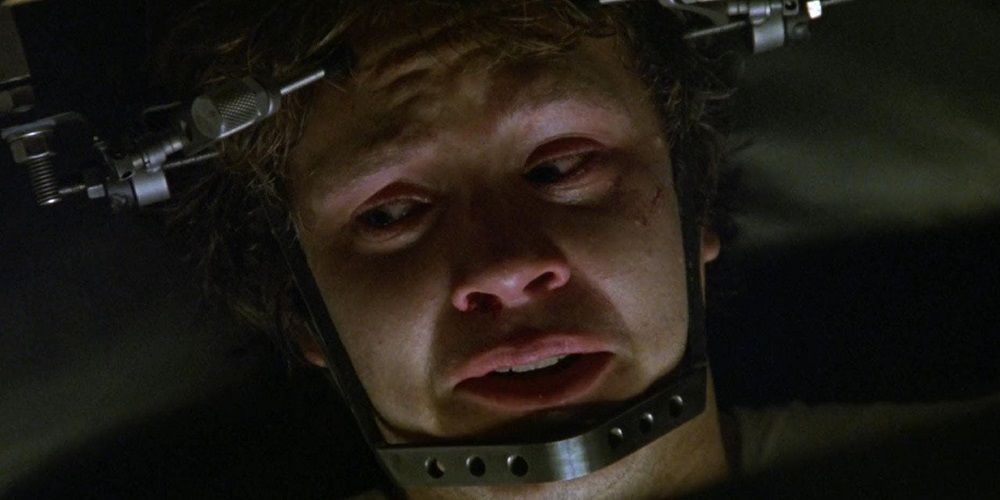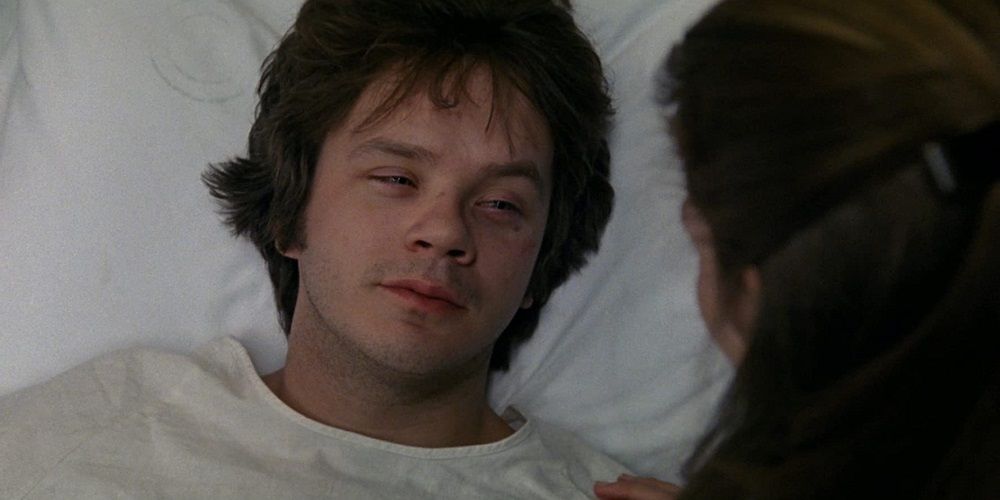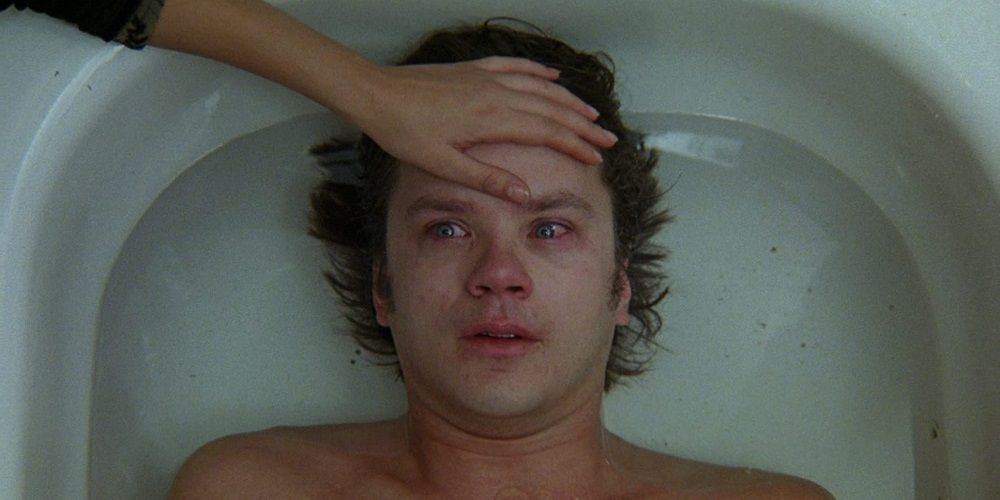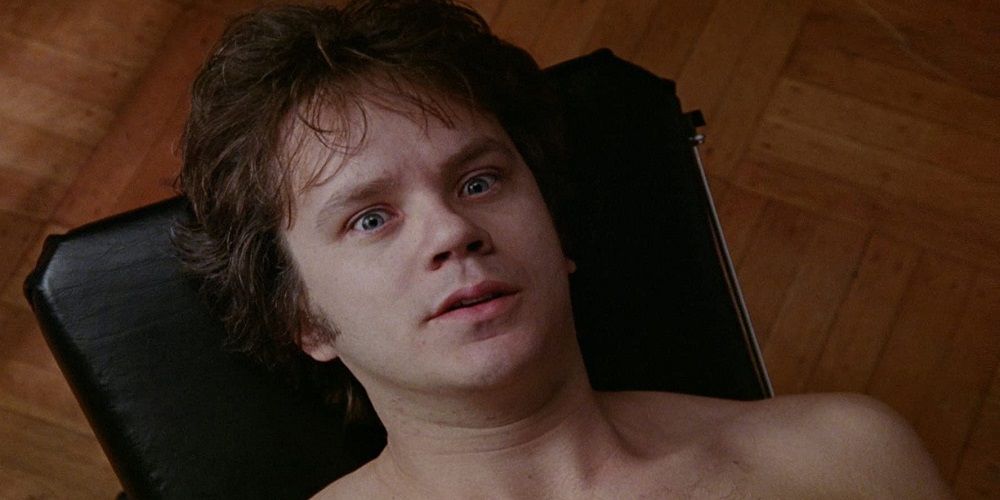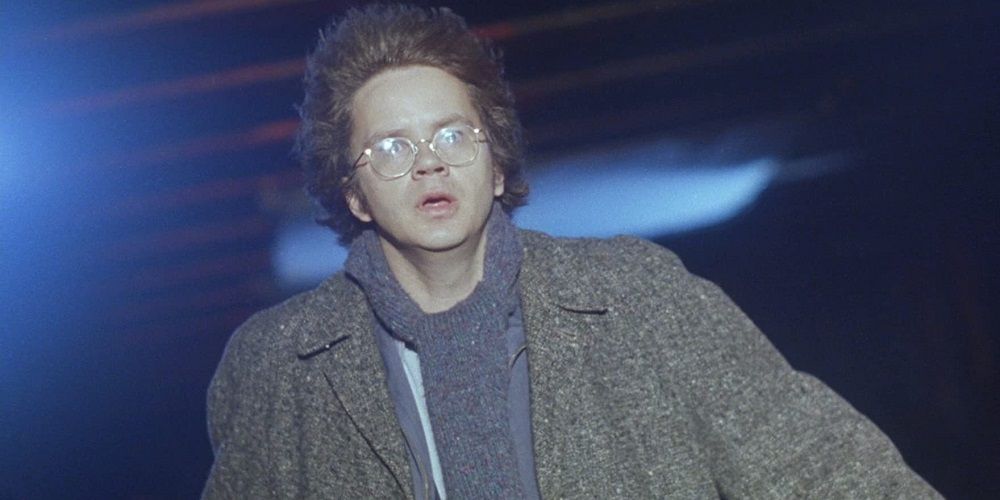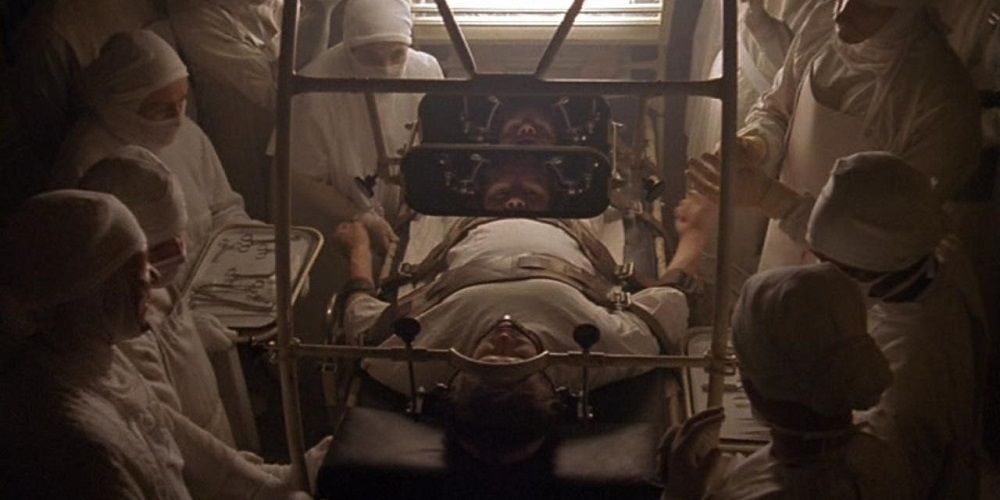Jacob's Ladder has earned a reputation over the past three decades as being one of the most challenging and disturbing cult-movies ever made. The hallucinogenic horror movie, starring Tim Robbins as a Vietnam War vet plagued by terrifying images on his deathbed, has continued to mystify audiences since its release in 1990.
Haunted by the death of his young son Gabe, in addition to his wartime horrors, Jacob's life becomes a waking nightmare as he continues to confuse reality with fantasy. With the Adrian Lyne film turning 30 years old this November, here are 10 behind-the-scenes facts about the making of Jacob's Ladder!
Conception
According to screenwriter Bruce Joel Rubin, the idea of Jacob's Ladder was inspired by a dream he had during the early 1980s in which he was trapped in a subway. After years of struggling to get the script produced, the story was retooled as soon as Adrian Lyne boarded the project as director.
Rubin also cites Bardo Thodol, the Tibetan Book of the Dead, as a major inspiration for the story. Other inspirational sources include the biblical tale of Jacob's Ladder, as well as Robert Enrico's 1961 Oscar-winning short, Owl Creek Bridge.
Production Limbo
Jacob's Ladder spent several years in production limbo, during which several different directors were attached. Among them were such high-profile names as Sidney Lumet, Ridley Scott, Michael Apted, and more.
According to Paramount, the film struggled to get produced because ghost stories were no longer in vogue. Writer Bruce Joel Rubin then sold his screenplay for the movie Ghost, which went on to become a smash hit at the box-office. Paramount reassessed their notion of ghost movies and green-lit Jacob's Ladder.
Visual Inspiration
For the visual aesthetic of the movie, director Adrian Lyne drew inspiration from several real-life artists. Lyne cited the photography of Joel-Peter Witkin as a major inspiration, particularly his 1976 photo, "Man With No Legs." The image is reflected most in the hooded-man rapidly shaking his head in the film.
Other artists Lyne credited for inspiring the visual motif of the film included painters Francis Bacon, H.R. Giger, William Blake, as well as photographer Diane Arbus.
Casting
When it came time to cast Jacob's Ladder, Lyne considered several high-profile names to play the titular lead. Richard Gere, Dustin Hoffman, and Al Pacino were all interested in the role that ultimately went to Tim Robbins. Don Johnson and Mickey Rourke turned down the role.
The casting of Jezzie was far more difficult. Lyne auditioned more than 300 different women to play the role, including Jennifer Lopez, Madonna, Demi Moore, Julia Roberts, Andy MacDowell, and many more. The role was ultimately awarded to the late Elizabeth Pena, the first actress to audition. For Jacob's son Gabe, Macauley Culkin was cast in the uncredited role.
Bergen Street Set
The Bergen Street subway set in the film was originally scripted to take place at Nostrand Avenue. When the Bergen Street stop was chosen instead, an abandoned portion of the lower part of the subway had to be redressed to appear fully functional.
In the background of the subway station, every ad posted on the wall is an anti-drug promotion. This was done to reinforce the theme of the film as a drug-induced nightmare Jacob is suffering from. According to Lyne, the drug themes were derived from the book Acid Dreams: The CIA, LSD, and Sixties Rebellion.
Biblical Themes
In the original script, the demonic hallucinations Jacob's suffers from assumed many of the shapes depicted in the bible. These would have included winged-beasts, horned-demons, cloven-hooved monsters, etc. But when Lyne boarded the project, he nixed the biblical imagery for fear of them being too ridiculous.
Instead, Lyne felt the hallucinations would be far more terrifying if they resembled human beings. This led to Lyne's research on the Thalidomide scandal in the 1950s and he opted for imagery of physical deformities caused at birth.
Special FX
Every special effect in Jacob's Ladder was achieved by the camera on the day it was filmed. Not a single computer-generated image or post-production optical effect was employed.
For the iconic shot of the "shaky head" doctor, for example, Lyne filmed the actor swerving his head around while keeping the rest of his body entirely still. Lyne shot the actor at four frames per second. When the footage was sped up to the normal 24 frames per second, the effect appears as if the man is rapidly wagging his head back and forth.
Original Script
The original screenplay had several scenes and ideas that were ditched by Lyne prior to production. One of them includes the iconic dance scene, which was originally set to feature every dancer turning into demons, rather than just Jezzie.
Another major piece that was discarded involved a giant celestial staircase that Jacob envisions on his deathbed, punctuated by heavenly music as the structure extends into the clouds. Lyne also thought this would induce laughter among viewers and changed the staircase to the one seen inside Jacob's house instead.
Deleted Scenes
Several scenes were shot but ultimately deleted from the final cut of Jacob's Ladder. One of them includes a sequence in the subway after Jacob is nearly run over by a train. After the incident, Jacob goes to the bathroom to find a man being raped.
After the test screenings of the film confused viewers, 20 minutes of footage was excised from the final cut. Four major sequences from the final act were discarded, including Michael giving Jacob an antidote, Jacob believing he's cured but isn't, Jacob discovering Michael's decapitation, and the finale, where Jezzie reveal her demonic identity.
Ending
The original ending of Jacob's Ladder was far different than what appears in the finished version. Rather than lying on his deathbed, Jacob was to fight Jezzie in her demonic form before ascending to heaven.
When Lyne altered the ending, Paramount still took umbrage with the conclusion. The studio demanded the ending be changed, which Lyne refused to do. Paramount Pictures shut down production as a result, leaving the fate of the film unknown. Finally, Carolco Pictures gave Lyne creative control and a $25 million budget to make the film.

